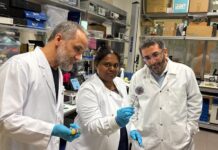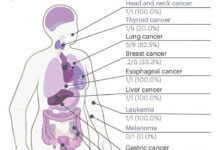A case report highlights the significant effectiveness of Vitamin E in alleviating symptoms of antipsychotic-induced tardive dyskinesia (TD) and extrapyramidal symptoms (EPS), particularly in patients who have not responded to conventional treatments. This adds to the growing body of evidence suggesting Vitamin E may be beneficial for these patients.
EPS and TD are serious side effects commonly linked to antipsychotic medications, resulting in involuntary movements, muscle rigidity, and other motor issues. These conditions can severely impact patients’ quality of life and complicate the management of their underlying psychiatric disorders. Treatment often involves adjusting medication doses or switching to atypical antipsychotics, though these approaches can yield inconsistent results.
Case Report:
A 28-year-old Middle Eastern man developed severe motor disturbances, including tremors, muscle rigidity, a parkinsonian gait, and involuntary limb movements, following a 350 mg paliperidone injection every three months. His Abnormal Involuntary Movement Scale (AIMS) score was 24, indicating the severity of his symptoms.
Patient History:
The patient’s history includes polysubstance abuse, primarily alcohol and inhalants, prior to being diagnosed with a psychotic disorder. His psychiatric symptoms worsened when his treatment switched to an extended-release formulation of paliperidone. Despite discontinuing paliperidone and introducing supportive treatments like procyclidine, propranolol, clonazepam, and omega-3 supplements, his symptoms showed little improvement.
Introduction of Vitamin E:
The medical team decided to introduce oral Vitamin E at 400 IU daily. Within weeks, this resulted in an 80% reduction in EPS and TD symptoms, with the patient’s AIMS score dropping from 24 to 4. After increasing the dosage to 1200 IU daily, the patient’s symptoms fully resolved, as indicated by an AIMS score of 0. This improvement allowed for the gradual reduction and eventual discontinuation of other adjunctive medications, with the patient maintaining a symptom-free state and improved quality of life during follow-up.
As reported by clinicaladvisor, the case suggests that Vitamin E, a powerful antioxidant, may be an effective adjunct treatment for patients experiencing antipsychotic-induced motor symptoms that are resistant to standard therapies. While further research is needed to determine optimal treatment protocols, these findings point to Vitamin E’s potential role in alleviating TD and EPS, especially when introduced early.
The authors concluded, “This case contributes to the growing evidence supporting the use of antioxidants like Vitamin E in treating neuroleptic-induced movement disorders.”
























